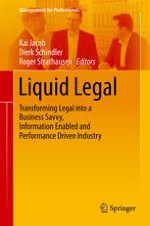2017 | OriginalPaper | Buchkapitel
The Value Add of Legal Departments in Disputes: Making a Business Case Rather Than Providing Pure Legal Advise
Aktivieren Sie unsere intelligente Suche, um passende Fachinhalte oder Patente zu finden.
Wählen Sie Textabschnitte aus um mit Künstlicher Intelligenz passenden Patente zu finden. powered by
Markieren Sie Textabschnitte, um KI-gestützt weitere passende Inhalte zu finden. powered by
